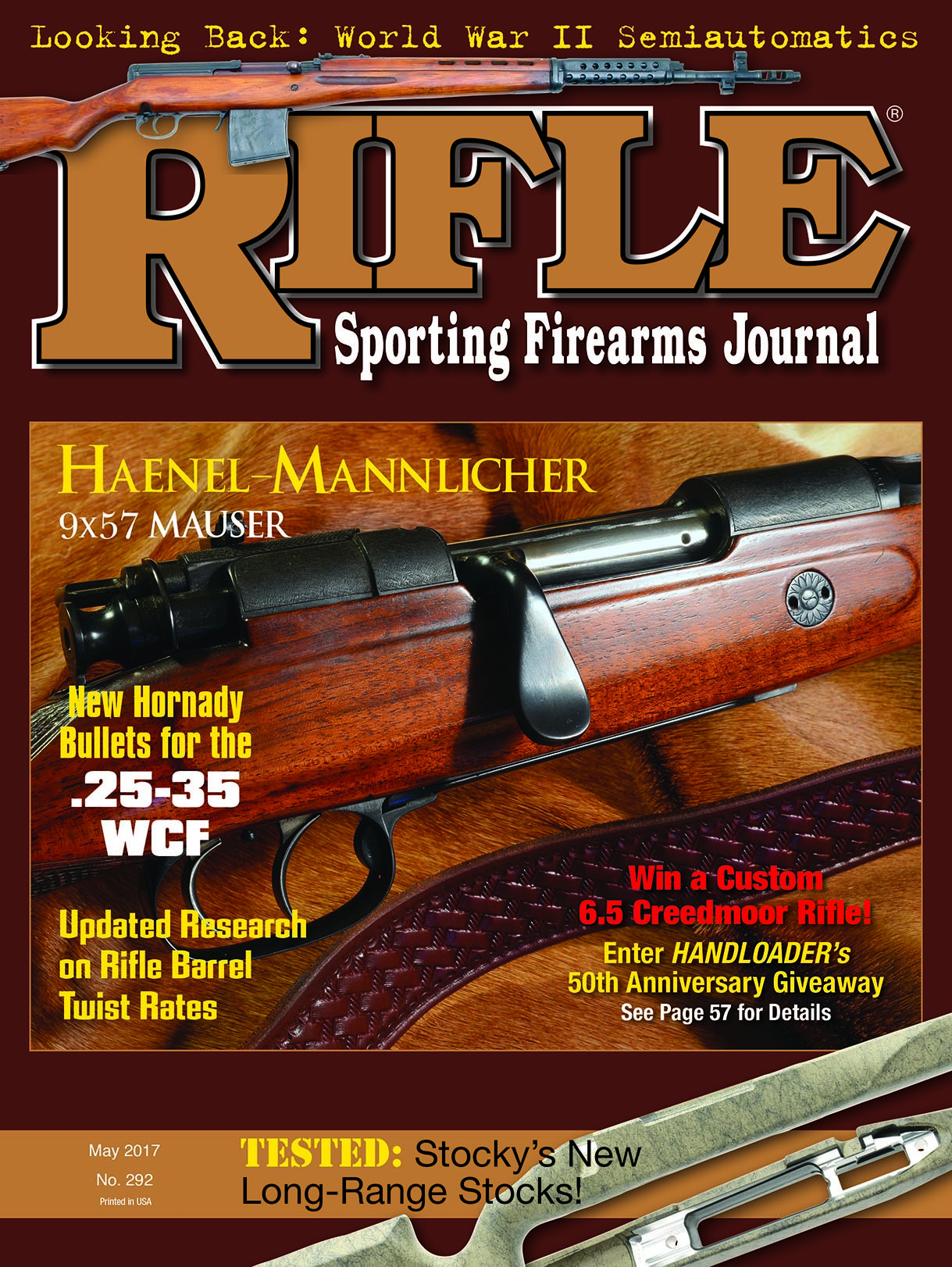Stocky's Long-Range Stocks
Field Testing a Pair of New Model 700 Handles
feature By: John Haviland | May, 17
For years on end, Don Bitz has had a passion for refurbishing rifles but found few choices when it came to buying replacement stocks. The slim selection mostly included injection-molded stocks in basic black. That prompted him to start working with laminated wood stocks, synthetic stocks made by Bell and Carlson, and eventually selling stocks.


“I bought a hundred stocks from this outfit and another hundred from that company,” Bitz said, “with plans of selling them on eBay.” The stocks sold within a few weeks, telling him there was a demand for replacement stocks. A hobby quickly turned into a full-time business. In 2006, Bitz opened his Stocky’s Stocks website and began selling stocks in styles from crazy to classic made of walnut, wood laminate and synthetic from a variety of manufacturers. Bitz, however, had his own ideas of what materials, dimensions and barrel/receiver fit a proper stock should have and eventually developed his own stock designs, manufactured for him by other stock companies.
Recently Bitz took the expensive step to make his own stocks. His Long Range Composite (LRC) stock is injection-molded and fits short and standard-length Remington Model 700 barreled receivers. “Injection-molded” is a general term for stocks usually made of various thermoplastics like polypropylene with its melting point that makes it ideal for synthetic stocks. “A key reason for making stocks out of polypropylene is the material is inexpensive and you can get a stock’s weight down to around two pounds,” Bitz said. Because the stocks are flexible and relatively soft, though, they are often disparagingly described as Tupperware stocks.
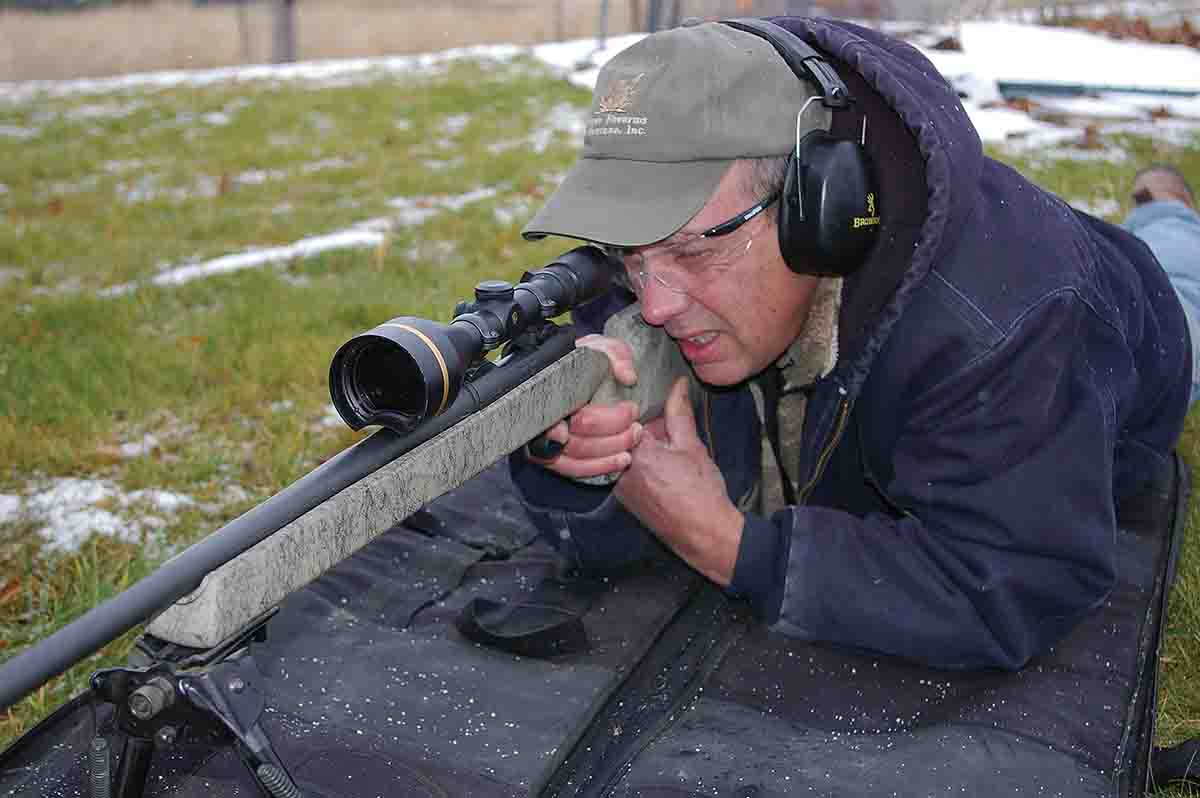
Bitz says his LRC stock is poles apart from other injection-molded stocks. The LRC is made of a compound of 43 percent fiberglass-filled nylon. “This heavy material is injected under 120 tons of pressure, or twice that of regular injection-molded stocks, to make sure the mold is completely filled,” Bitz said.
Bitz devoted two years to designing the LRC stock and “spent over six figures” on the steel dies to fit an injection mold machine. A finished stock sells for about $200.
An aluminum AccuBlock receiver cradle is molded into the stock when it is formed. The AccuBlock is designed with a V-shaped interior to hold a Model 700 receiver tightly in the block. When the action screws are tightened, the V shape pulls the receiver down straightly and keeps it from bottoming out in the block, so tension remains constant along the entire length of the receiver and block. That’s not a close enough fit for some accuracy enthusiasts, so
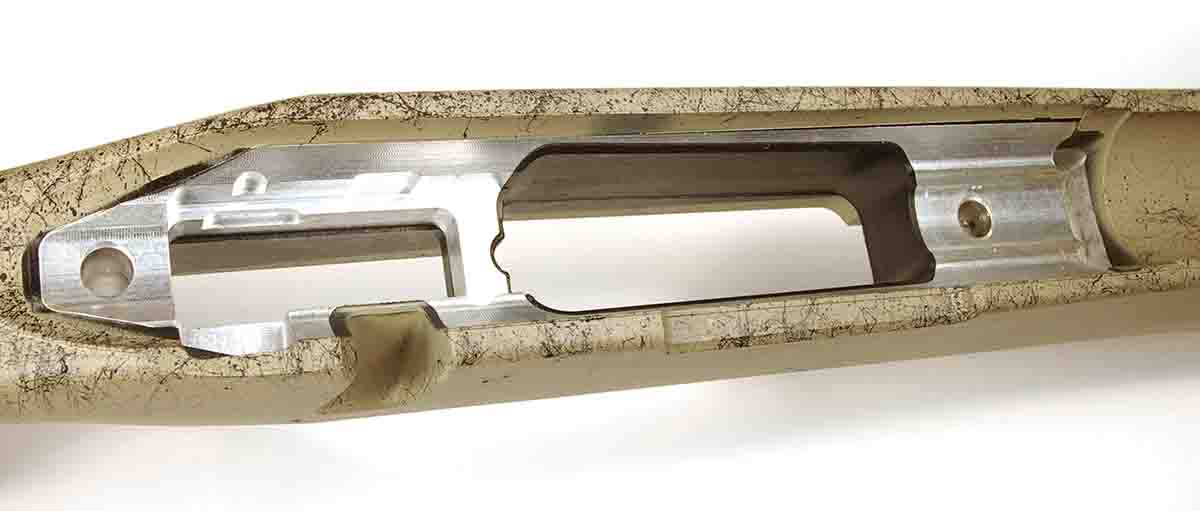
The LRC stock uniquely adapts to a variety of barrel diameters. The stock comes with either a narrow insert that fits in the barrel channel to match the contour of a sporter-weight barrel or a wide insert to match the shape of a magnum or varmint barrel. The insert is locked into the barrel channel with three screws. Removing the screws and insert leaves a barrel channel width of about 1.20 inches to accommodate an unturned barrel or Proof Research carbon fiber-wrapped barrel. The LRC stock I borrowed came with a narrow insert to fit the sporter barrel on a Remington Model 700 SPS. A bit of a gap was visible between the barrel and the insert, and the barrel was entirely free-floated
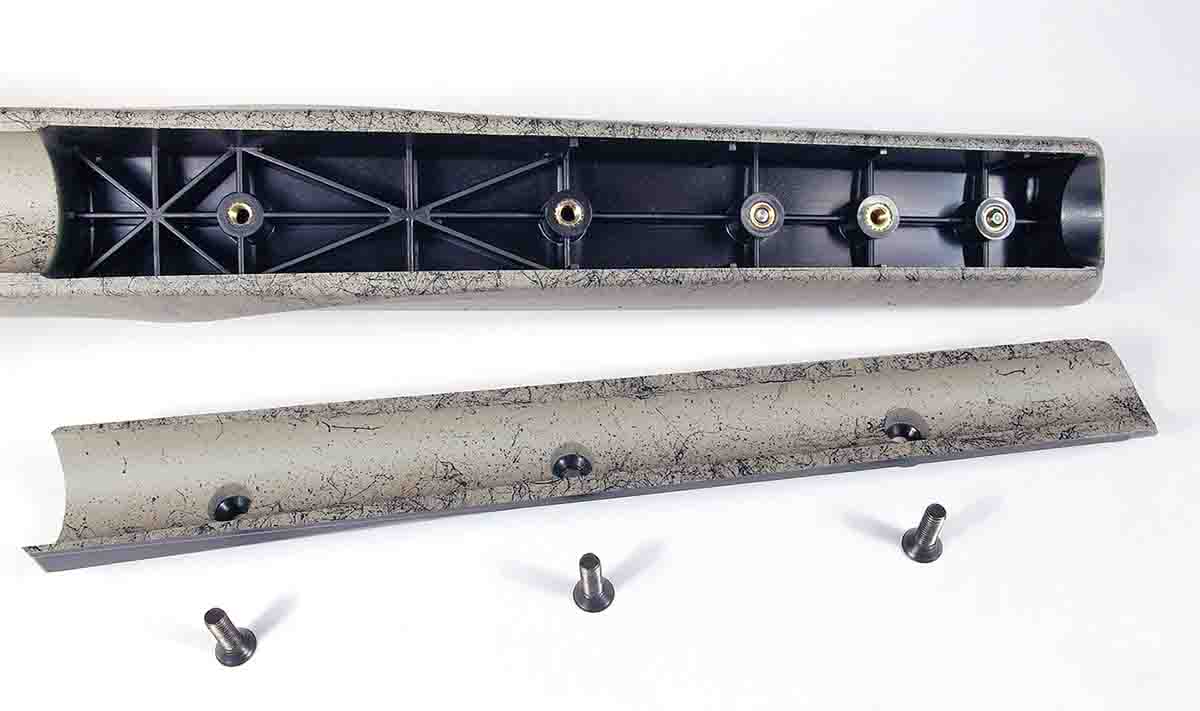
“At first I thought the barrel channel insert would add some stiffness to the LRC’s forearm,” Bitz said, “but it turned out the forearm was plenty stiff as it was.” The forearm is nearly two inches wide, and a crisscrossed frame is molded into the bottom of the barrel channel. The stock’s forearm was clamped in a vise, and a big screwdriver was inserted into the receiver opening. The tool was pulled hard to see if the forearm or any part of the stock would twist, but they never moved. “Around here we say ‘rigidity is accuracy,’” Bitz said.
The LRC stock is designed for “deliberate long-range shooting.” The comb is certainly high enough to keep the head erect behind a scope with a large objective lens that sits high above the receiver. A slot on the nose of the comb provides clearance to remove the bolt. The comb and bottom of the buttstock are angled to narrow flats. These angles extend back to the KickSoft recoil pad.
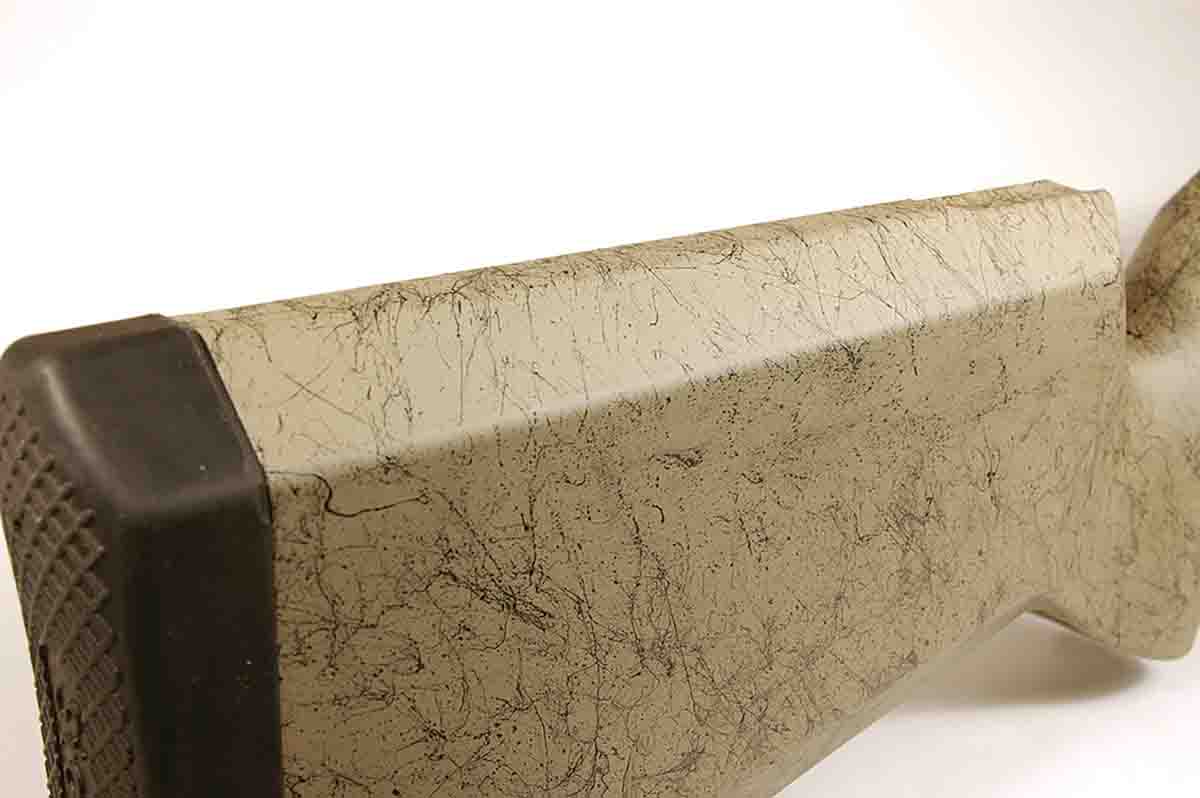
I prefer a bottom with a wide flat, so the buttstock sits steadily on a rear shooting bag, and a rounded comb to comfortably support my cheek. “Actually, customers tell me they like the angles [on the comb], because it gives them a better cheek weld,” Bitz said. “Those angles on the buttstock and forearm also add even more stiffness to the stock.” The forearm is fairly flat and long at 11.75 inches. Two swivel studs are included to attach a bipod and a sling. The stock has an overall length of 32 inches and weighs 3.5 pounds.
The LRC includes Stocky’s vertical grip. A palm swell on both sides makes the grip nearly two inches wide. “The grip is great for all-around, long-range shooting and hunting,” Bitz said. The stock is available with several painted finishes. Textured web finishes include gray webbing with a black stock and black webbing with a tan or olive stock. Kryptek Highlander and Typhoon camouflage patterns are also available.
Bedding a rifle’s receiver to the AccuBlock in the LRC stock is not necessary. Meticulous shooters may, however, want to apply a thin layer of epoxy bedding. I simply screwed the Model 700 SPS’s receiver into the LRC stock.
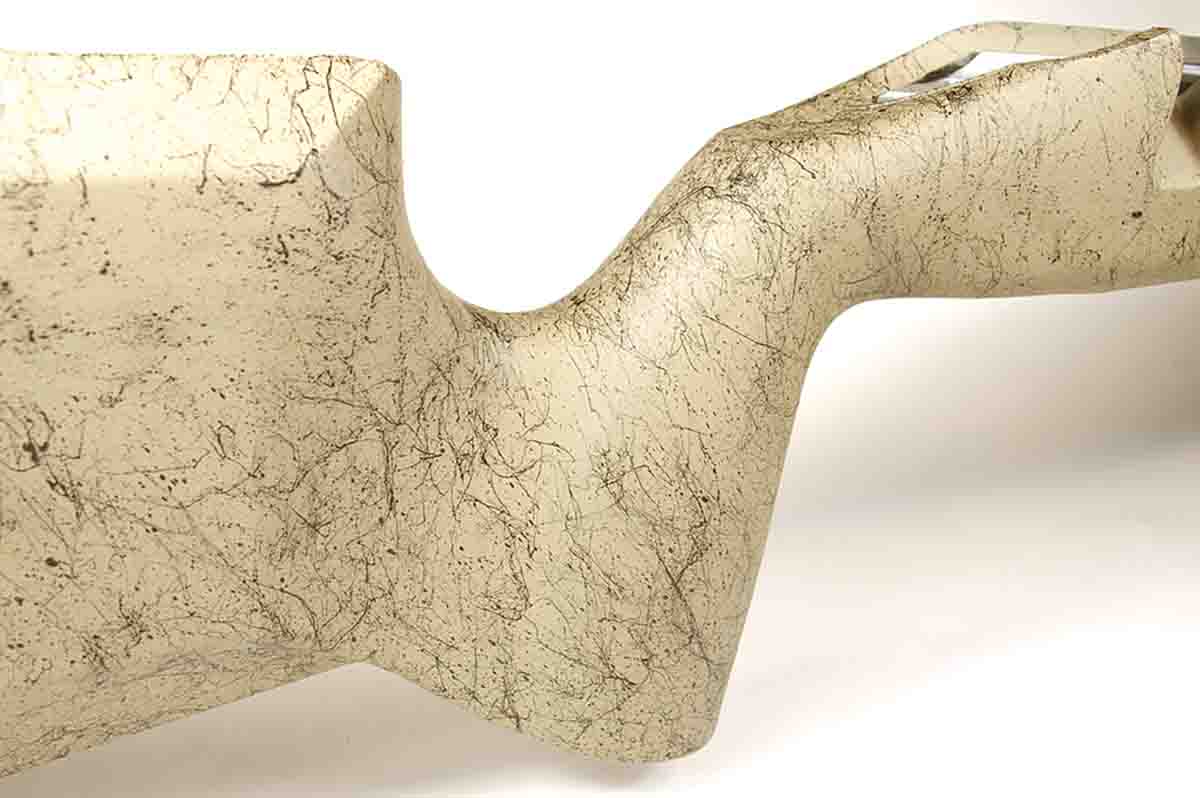
Over the years a number of rifles with injection-molded stocks, just like the Model 700 SPSs, have delivered good accuracy for me. I have shot the SPS in its factory synthetic stock a lot at targets with a .223 Remington load consisting of Nosler 50-grain Ballistic Tip bullets and 26.5 grains Benchmark powder in Winchester cases. From a rest on a bench, four, five-shot groups with that load measured .97, .91, 1.12 and .56 inches, for an average of .89 inch.
The rifle also shoots well from field positions, including prone with its forearm supported on a bipod; however, I avoid shooting the rifle with tension on its forearm from a sling pulled tightly around my upper arm. That moves bullet impact down and to the left a couple of inches at 100 yards.
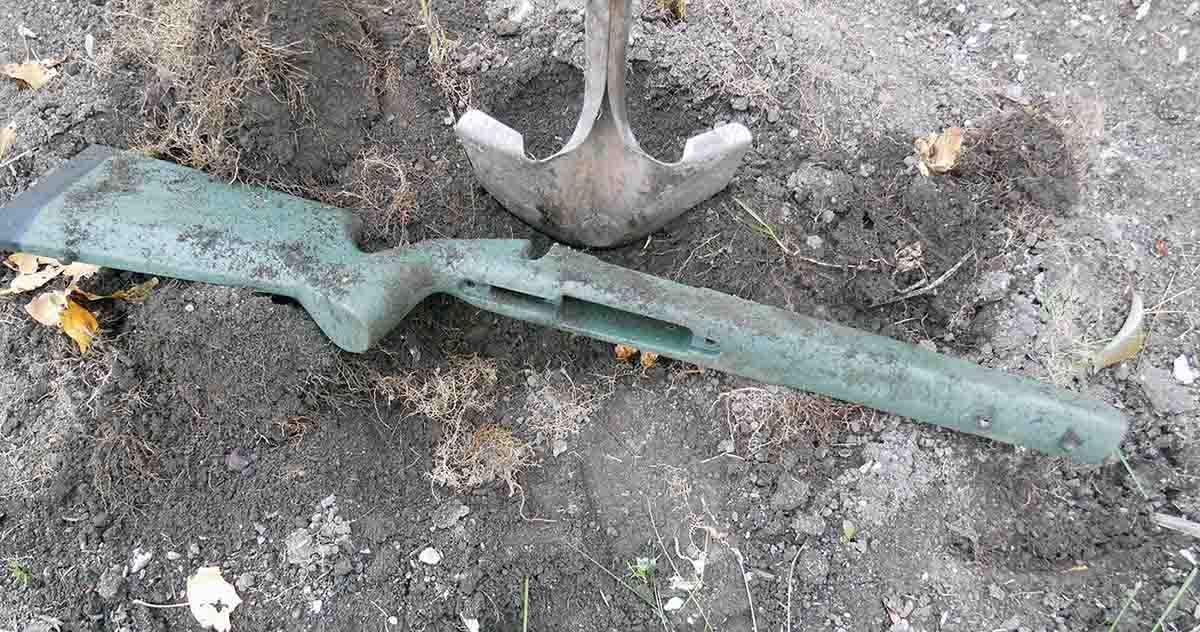
The LRC-stocked rifle was also shot from prone with the rifle supported on a Harris bipod. The thumb of my trigger hand didn’t fit well around the grip, but I recently saw some big-time, long-range target shooters place their thumbs alongside the grips on their rifles, so I copied them. The stock fit pretty well, especially the high comb that held my head erect. Using a bit of holdover with the scope’s reticle, small rocks cracked at 300 yards. Bullet impact remained the same when shooting the rifle with a tight sling pulling on the LRC’s forearm.
Bitz partnered with AG Composites on the new Carbon Fiber Long Range Sporter (CFLR) stock that sells for $500. The CFLR
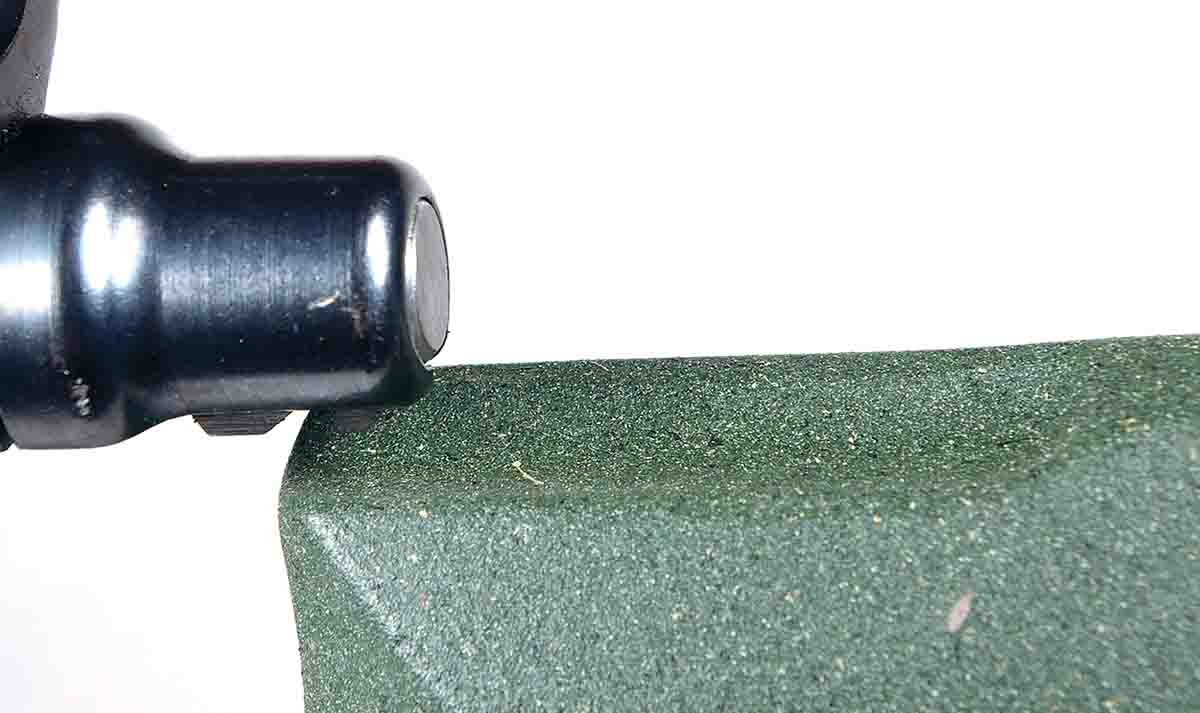
The CFLR and the LRC stocks share the same design of the fore-arm, buttstock and grip. The CFLR, though, includes a one-inch thick Pachmayr Decelerator recoil pad and contains no AccuBlock to cradle the action. Bitz recommends epoxy bedding the carbon fiber stock, but the stock has aluminum pillars in the receiver screw holes and is designed to allow simply screwing on a barreled action.
The carbon fiber stock is certainly hard and rigid. It could be used as a pry bar to lever a stuck truck out of the mud. The stock probably wouldn’t suffer any damage either if your truck ran over it. I buried the test sample in my garden to test how well its finish would hold up. For several weeks I daily watered the garden then eventually dug up the stock the same time as some carrots. After washing off the dirt, the stock looked brand new. There was a hint of rust on the sling swivel studs.
The proof is in the shooting, however, so I took a Remington Model 700 7mm Remington Magnum rifle and the CFLR stock to the range. I shot two, three-shot groups with the rifle in its original walnut Classic stock. Hornady American Whitetail cartridges loaded with 139-grain InterLock bullets shot groups of .95 and 1.40 inches at 100 yards, for an average of 1.175 inches. The groups had some vertical spread but still passable accuracy.
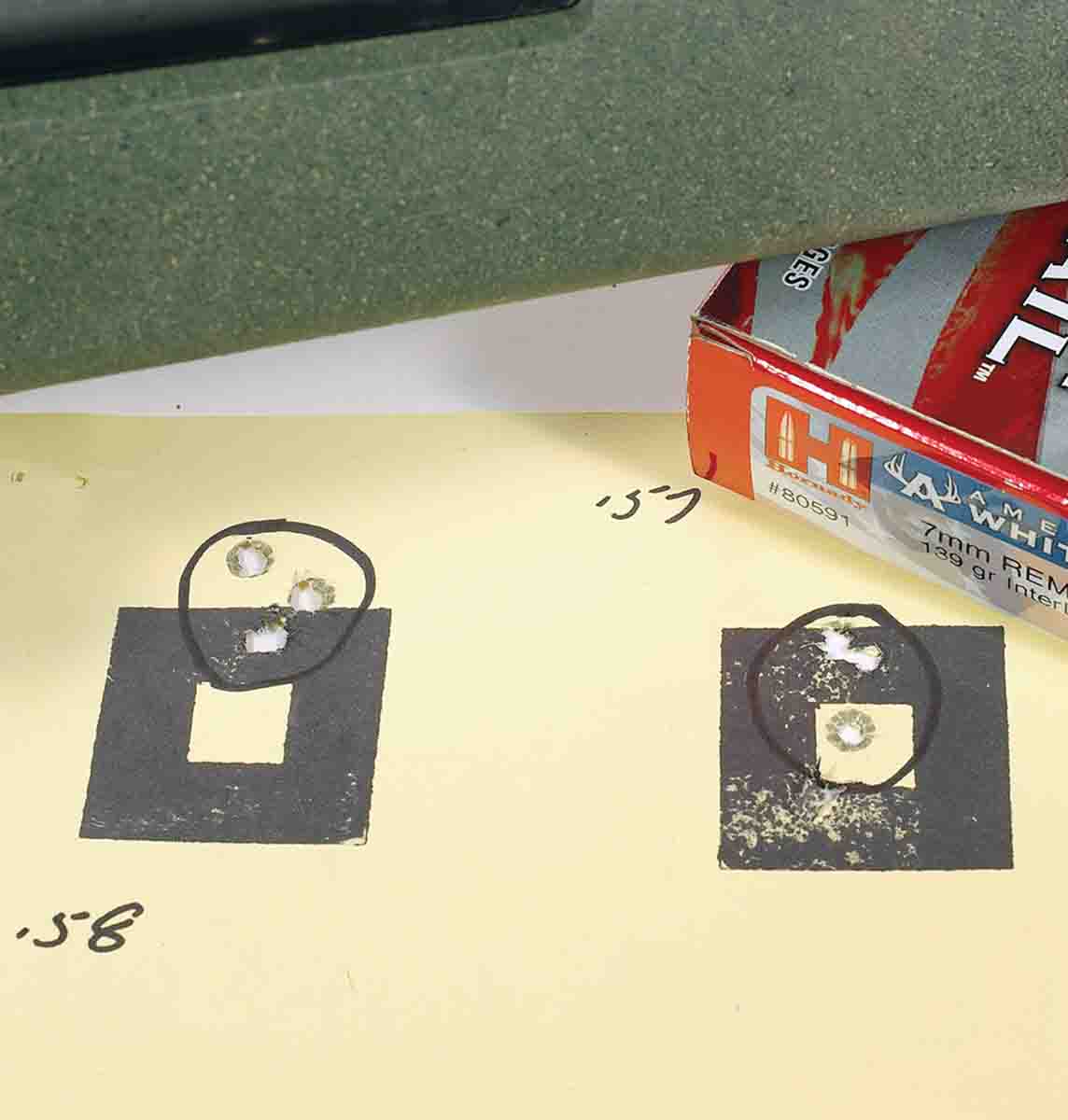
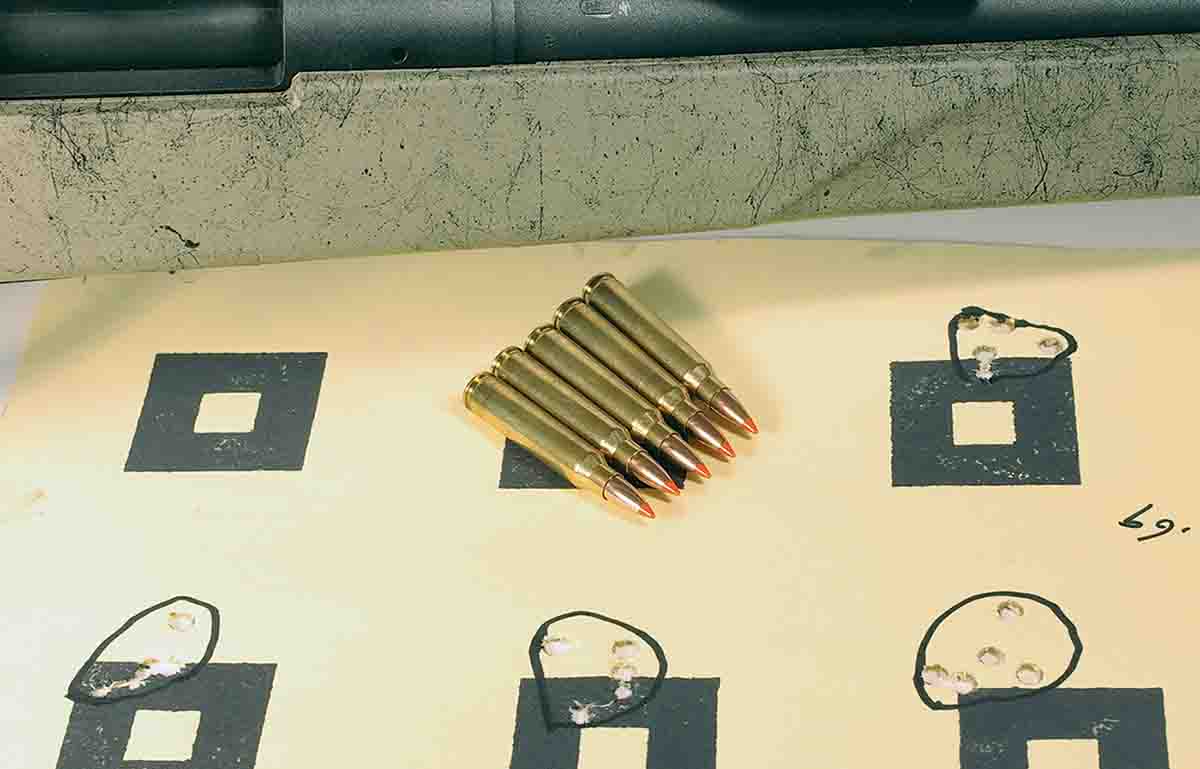
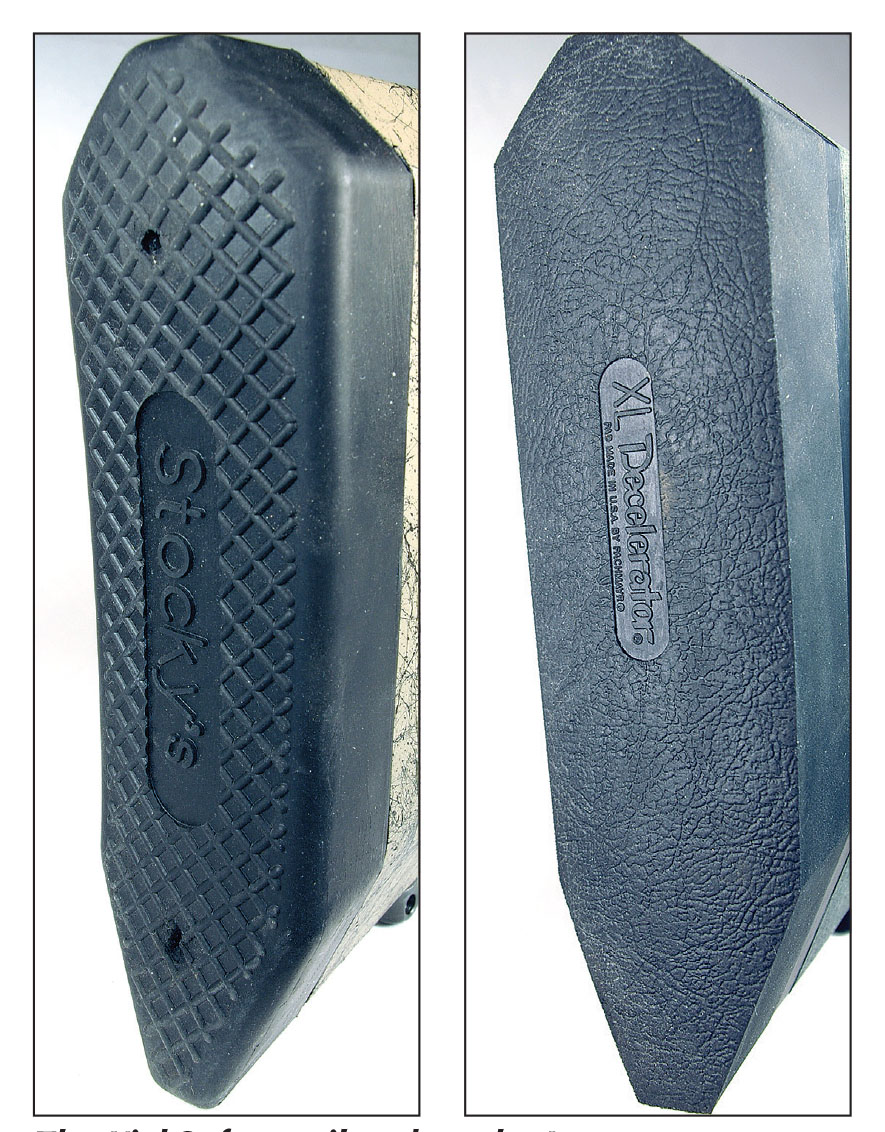
The walnut stock was then swapped for the CFLR stock. The receiver and floorplate/trigger guard fit exactly in the stock. There was a slight gap between both edges of the barrel channel and the barrel. The barrel was free-floated its entire length.
The stock’s wide and flat forearm held the rifle steadily on the rest, and I shot two, three-shot groups at 100 yards. The same ammunition shot groups of .58 and .57 inch, for an average of .575 inch. Those groups were by far the best the rifle has ever fired. The credit goes equally to the CFLR stock and Hornady ammunition.
The few remaining cartridges were fired through the rifle while sitting. The high comb kept my head erect and strain off my neck. I had to fiddle while placing my hands properly on the slab-sided forearm and large grip, and it took a few moments to align the scope’s reticle on rocks against a hill at 300 yards. Once the rifle was lined up, it was easy to hit rocks one after the other. Bullet impact remained the same with a tight sling pulling on the stock’s forearm; it should, as the forearm is stiff as a steel fence post.
Bitz said he is all about providing stocks for all shooters’ tastes. “Customers tell us what sells,” he said. For shooters, like me, who prefer a more traditional stock for hunting rifles, Bitz is finalizing his carbon fiber Classic stock that weighs 26 ounces with a slender grip and slim forearm that will complement his two long-range stocks.


